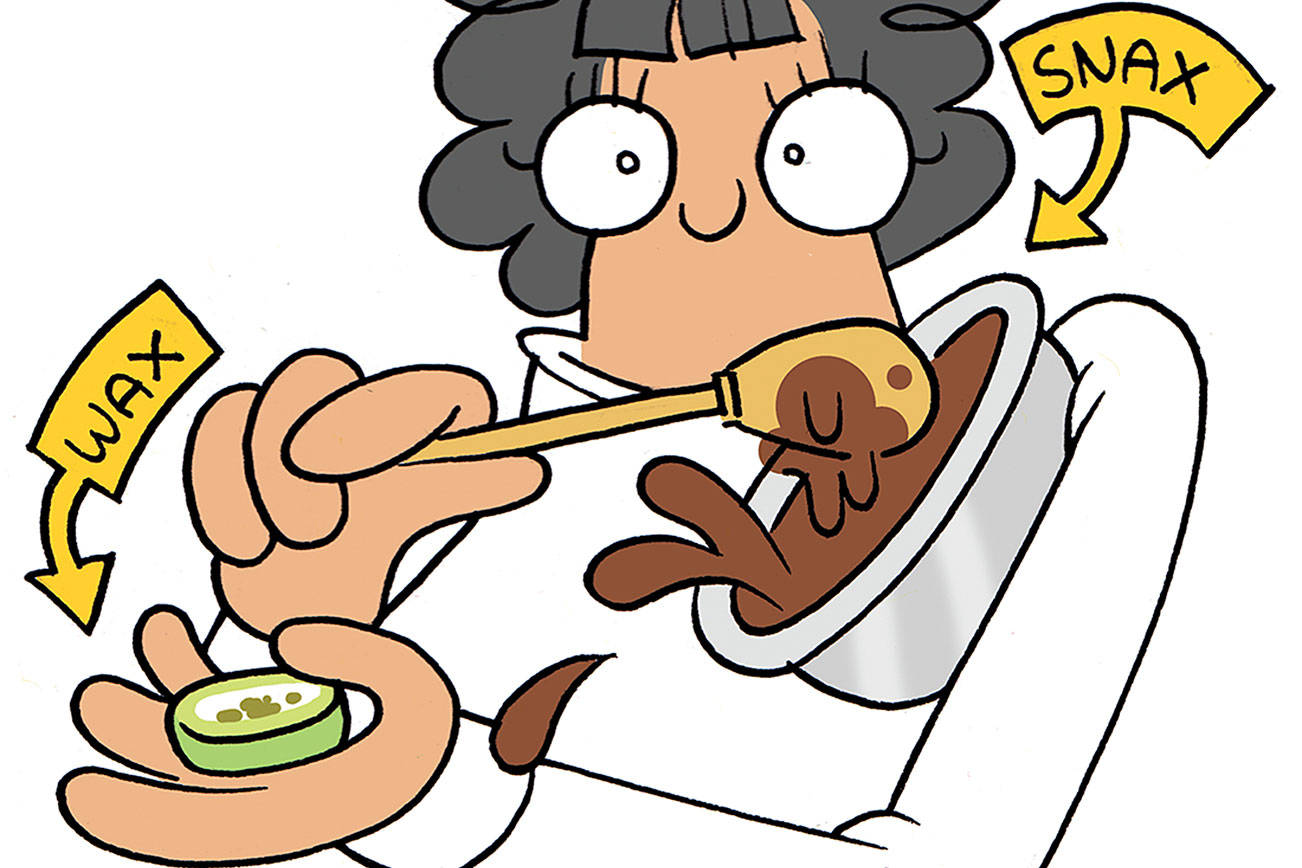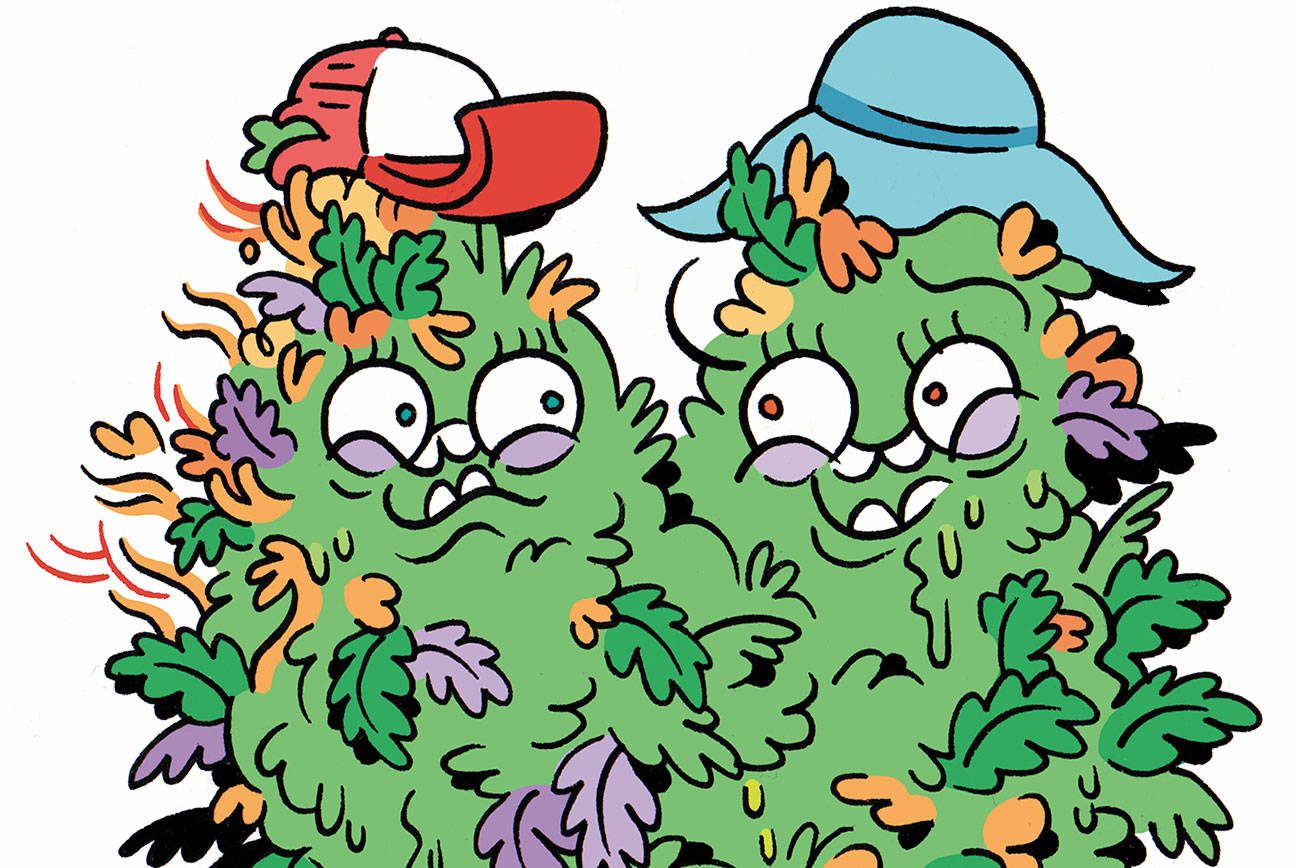Even if you don’t smoke weed, you have probably heard of THC and CBD—the cannabinoids in pot responsible for what kind of high you experience. But have you heard of terpenes? These little organic hydrocarbon buddies are known for being the big influencers in how cannabis tastes and smells, but they are likewise responsible for how pot affects you. Here’s a quick overview to get you up to speed on why terpenes will be your new favorite detail to check on your next dispensary visit.
In cannabis, terpenes play a special role. The highest concentration is found in the “nugs” or flowers of female plants—the tiny golden drops of dew dotting the surface of the leaves and stems. Along with providing signature sensory factors for certain strains—like the pure candy scent of Bubble Gum, the sweet citrus flavors of Tangerine, or the calming floral vibes of Lavender—terpenes seem to bring together the other families of cannabinoids in a beautifully choreographed dance of molecules called “the entourage effect.”
When cannabis compounds are singled out, those compounds can still get their jobs done, but when they are allowed to mingle and create combo effects, they can become more than the sum of their parts. “Cannabis is inherently polypharmaceutical,” Dr. John McPartland told Project CBD, “and synergy arises from interactions between its multiple components.” From a practical standpoint, that usually means a more intense session, but it’s a more potent, nuanced, well-rounded, full-bodied high. Through the entourage effect, you are getting to experience everything the whole plant has to offer—through the cannabinoid receptors in nearly every system of our bodies—not just a truck-ton of THC.
Beyond getting supremely blazed, however, there are many advantages to researching terpenes. Medically the potential is almost limitless. Whole families of terpenes are showing to be useful for treating conditions like depression and anxiety (limonenes), pain (linalools), inflammation (humelenes), and hundreds of other ailments. Researchers are also curious about how terpenes may assist the body in communicating with other drugs and medicines.
Along with the health-care possibilities, terpene molecules are antiseptic, antifungal, antibacterial, and insect-repellent. These incredible purifying qualities could be game-changers in developing areas of the world. (But selfishly, I’m excited for some of our world-renowned canna-chefs to get their hands on signature terpene profiles to create flavor journeys that are truly transcendent.)
To take advantage of the medicinal and recreational benefits of terpenes, make sure you are using products that take from the whole plant. The real terpene trip is found way out in Dab Country. You need to look for “whole plant extracts”—concentrates made by producers who have either maintained as many different terpenes and cannabinoids as possible through the concentration process or added terpenes back into the concentrate late in production. When dabbing, keep your temperature low. 150 degrees Fahrenheit is plenty hot, as many terpenes are volatile and burn off easily.
Due to the prohibition of cannabis cultivation in the last century, growers did not have the luxury of exploring the plant’s potential, and focused on forcing the plant to produce maximum THC, the only element known (at the time) for getting people high. But now that cannabis legalization is finally on the horizon, growers and researchers can experiment and play, uncovering the many secrets, like terpenes, that cannabis has been hiding, waiting for our discovery.
stashbox@seattleweekly.com







